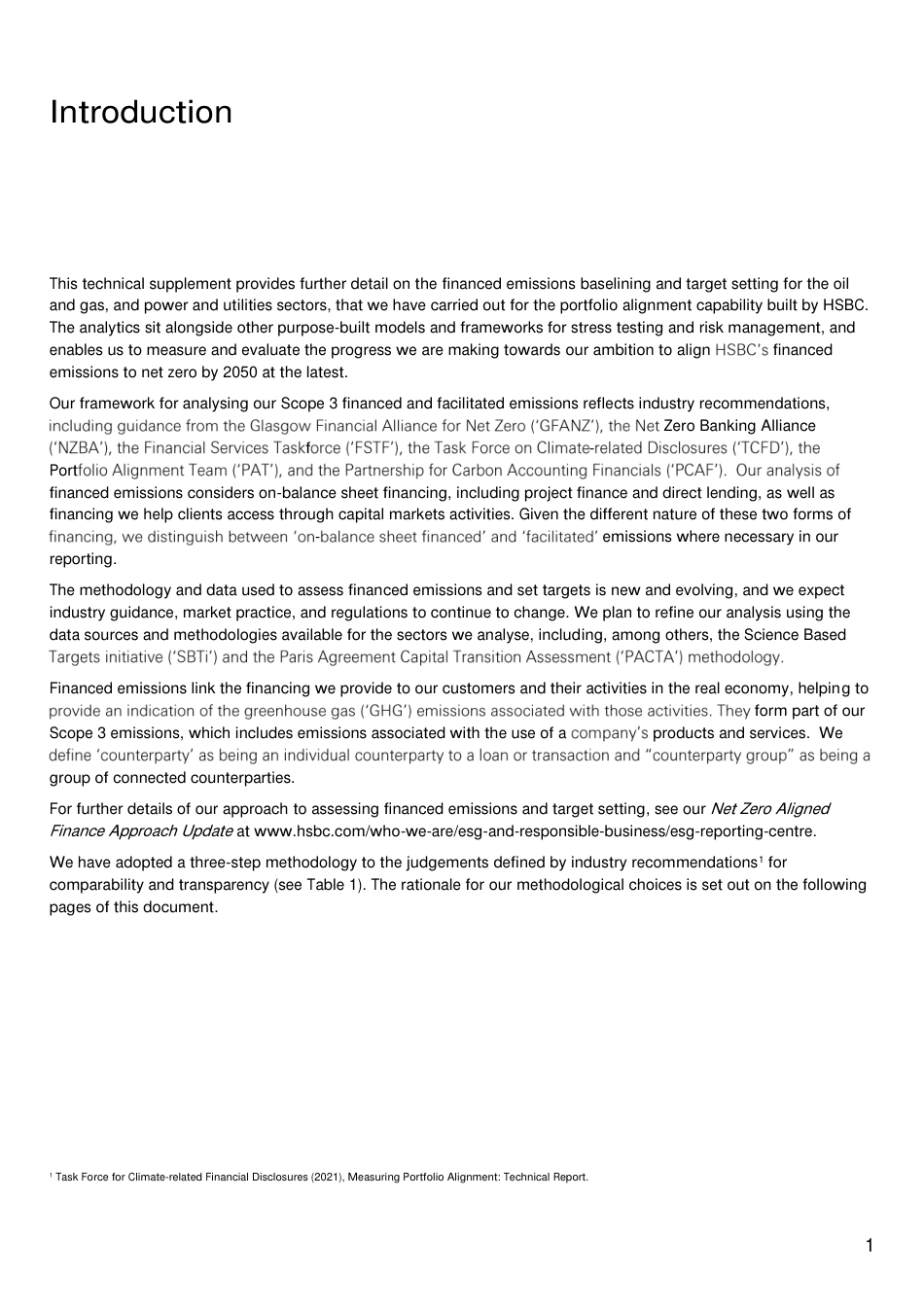HSBC Holdings plc Financed Emissions Methodology 22 February 2022 1 Introduction This technical supplement provides further detail on the financed emissions baselining and target setting for the oil and gas, and power and utilities sectors, that we have carried out for the portfolio alignment capability built by HSBC. The analytics sit alongside other purpose-built models and frameworks for stress testing and risk management, and enables us to measure and evaluate the progress we are making towards our ambition to align financed emissions to net zero by 2050 at the latest. Our framework for analysing our Scope 3 financed and facilitated emissions reflects industry recommendations, Zero Banking Alliance f-Portfinanced emissions considers on-balance sheet financing, including project finance and direct lending, as well as financing we help clients access through capital markets activities. Given the different nature of these two forms of -emissions where necessary in our reporting. The methodology and data used to assess financed emissions and set targets is new and evolving, and we expect industry guidance, market practice, and regulations to continue to change. We plan to refine our analysis using the data sources and methodologies available for the sectors we analyse, including, among others, the Science Based Financed emissions link the financing we provide to our customers and their activities in the real economy, helping to form part of our Scope 3 emissions, which includes emissions associated with the use of a products and services. We group of connected counterparties. For further details of our approach to assessing financed emissions and target setting, see our Net Zero Aligned Finance Approach Up...



